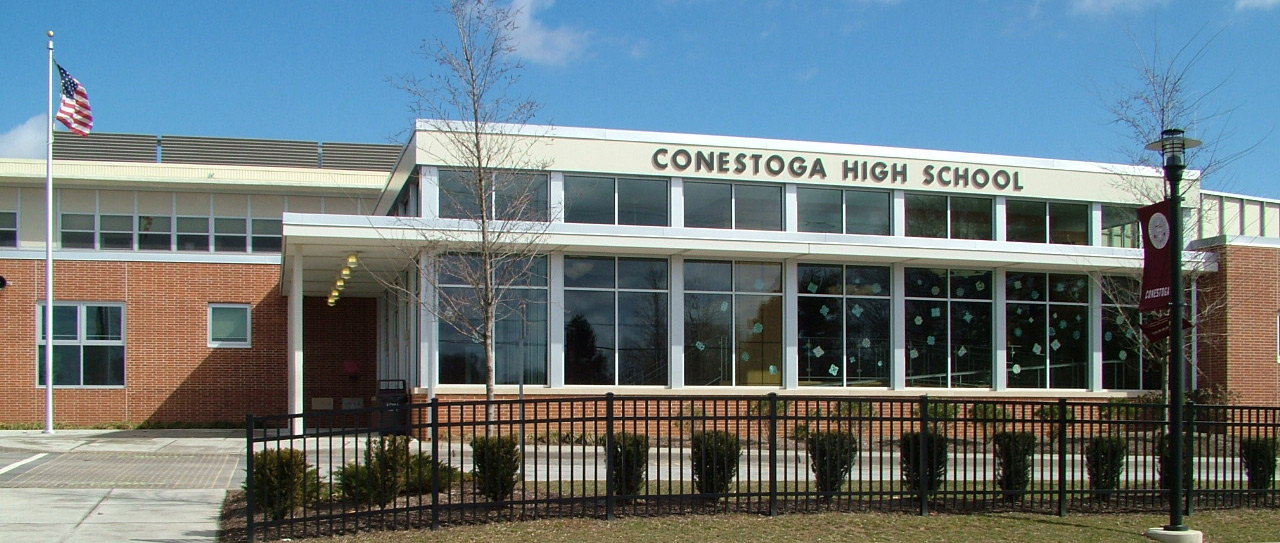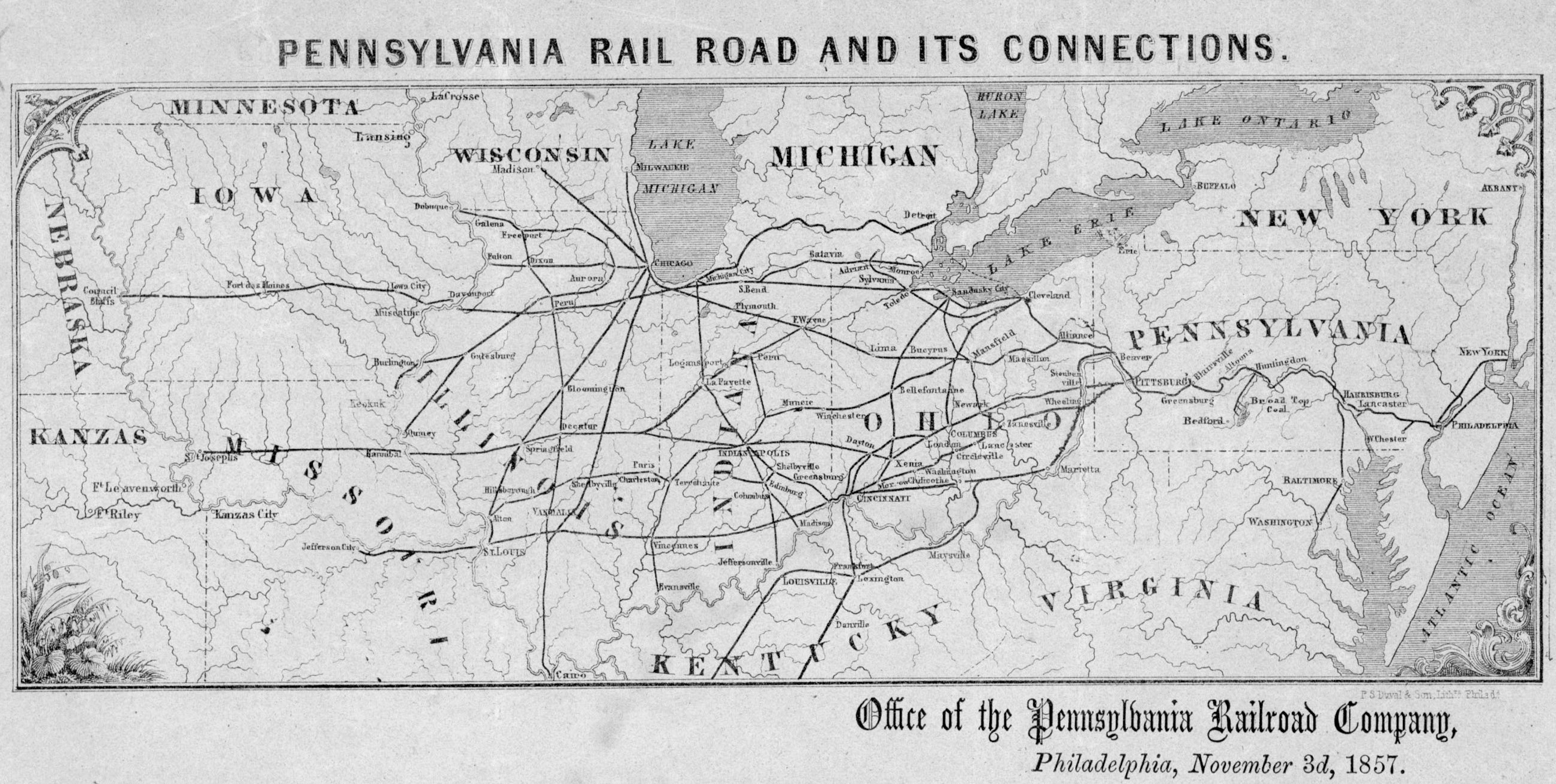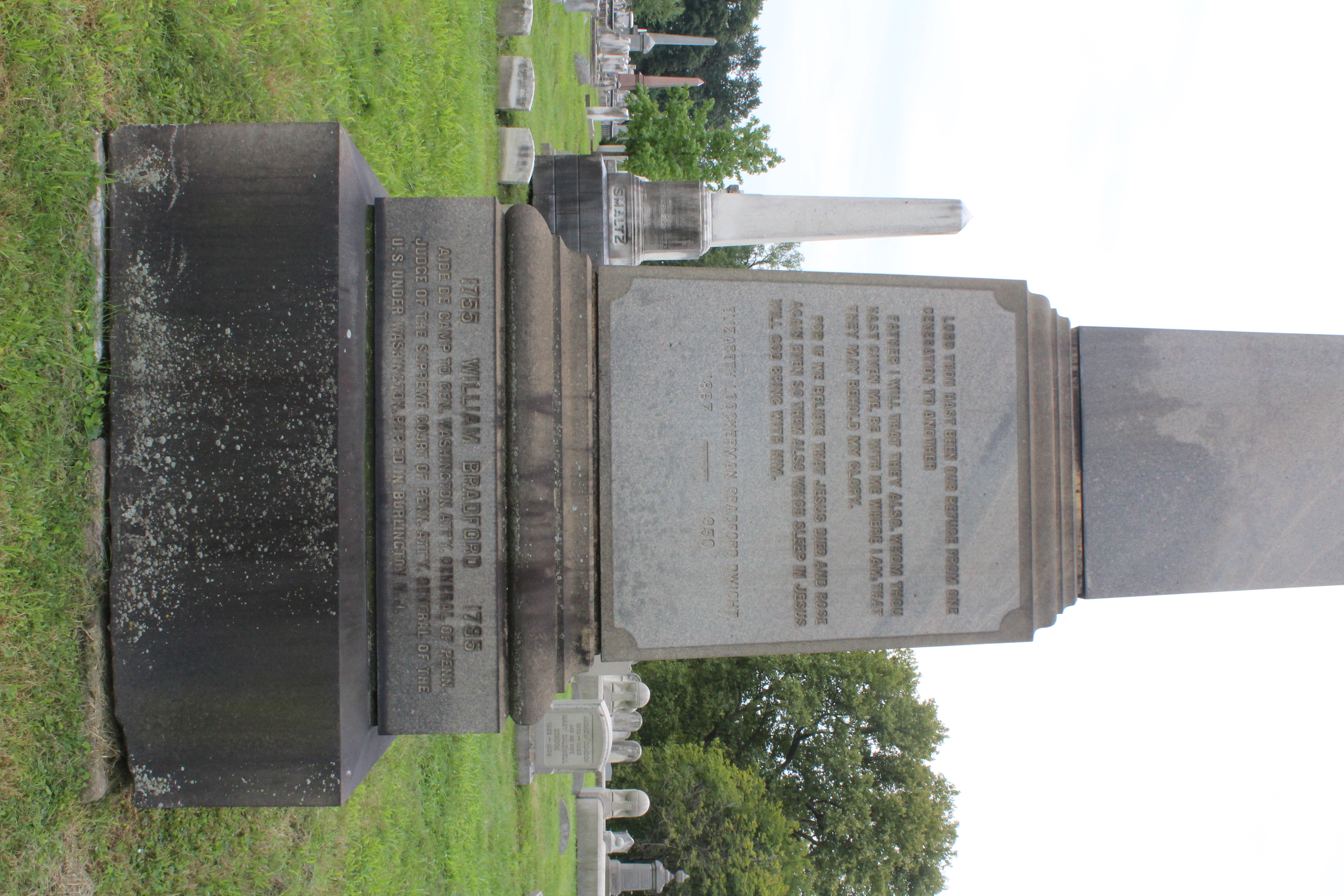|
David Havard House
The David Havard House, also known as the Former Quarters of Lee and Bradford, is a historic home located near Valley Forge in Tredyffrin Township, Chester County, Pennsylvania. During the American Revolutionary War, it served as quarters for several of George Washington's senior officers. The original house was built about 1766, and is a -story, stuccoed stone structure. It has a rear wing. It was listed on the National Register of Historic Places in 1972. Historical significance The homes of David Havard and two of his brothers were used as lodging and headquarters by officers serving under George Washington, during the encampment of Washington's army at Valley Forge from December 1777 through June 1778. Upon the arrival of the Continental Army at Valley Forge, the David Havard House served as quarters for Colonel William Bradford and Colonel Elias Boudinot, who were brothers-in-law. Bradford's older brother Thomas, a captain, arrived in January 1778, and their father, ... [...More Info...] [...Related Items...] OR: [Wikipedia] [Google] [Baidu] |
Tredyffrin Township, Chester County, Pennsylvania
Tredyffrin Township ( ) is a township located in eastern Chester County, Pennsylvania. The population was 29,332 at the 2010 census. Settled in the late 17th century, Tredyffrin is bounded by Delaware and Montgomery counties. It includes on its northern boundary a small part of Valley Forge National Historical Park, where George Washington encamped during the American War of Independence. Tredyffrin and the entire Great Valley region also have many limestone deposits. Tredyffrin is the most populous township in Chester County. Unincorporated communities within Tredyffrin Township include Chesterbrook, Strafford, a portion of Paoli, and a portion of Wayne, Howellville (the intersection of Swedesford and Howellville Roads) and East Howellville (along Howellville Road, west of the intersection of Howellville Road and the border between Tredyffrin and Easttown Townships). Tredyffrin is bordered by Easttown, East Whiteland, Willistown, Charlestown, Upper Merion, Radnor ... [...More Info...] [...Related Items...] OR: [Wikipedia] [Google] [Baidu] |
William Bradford (American Revolutionary Printer)
William Bradford (1719 – September 25, 1791) was a printer, soldier, and leader during the American Revolution from Philadelphia. Bradford was born in New York City in 1719,Some sources give Bradford's birth year as 1722: . and was the grandson of the printer William Bradford. He was apprenticed to (and later a partner of) his uncle Andrew Bradford in Philadelphia. This relationship ended in 1741. He visited England that year, returning in 1742 with equipment to open his own printing firm as well as a library. Bradford was the publisher of ''The Pennsylvania Journal'', the first number of which appeared on December 2, 1742. In later years each issue had the still-recognized image of the snake chopped into segments with the motto " Unite or Die". Variations of this logo were also used by Paul Revere, Benjamin Franklin, and others. In 1754 he also opened the London Coffee House in Philadelphia and began to write marine insurance. As a publisher and writer he attacked many polic ... [...More Info...] [...Related Items...] OR: [Wikipedia] [Google] [Baidu] |
Houses Completed In 1766
A house is a single-unit residential building. It may range in complexity from a rudimentary hut to a complex structure of wood, masonry, concrete or other material, outfitted with plumbing, electrical, and heating, ventilation, and air conditioning systems.Schoenauer, Norbert (2000). ''6,000 Years of Housing'' (rev. ed.) (New York: W.W. Norton & Company). Houses use a range of different roofing systems to keep precipitation such as rain from getting into the dwelling space. Houses may have doors or locks to secure the dwelling space and protect its inhabitants and contents from burglars or other trespassers. Most conventional modern houses in Western cultures will contain one or more bedrooms and bathrooms, a kitchen or cooking area, and a living room. A house may have a separate dining room, or the eating area may be integrated into another room. Some large houses in North America have a recreation room. In traditional agriculture-oriented societies, domestic animals such ... [...More Info...] [...Related Items...] OR: [Wikipedia] [Google] [Baidu] |
Houses On The National Register Of Historic Places In Pennsylvania
A house is a single-unit residential building. It may range in complexity from a rudimentary hut to a complex structure of wood, masonry, concrete or other material, outfitted with plumbing, electrical, and heating, ventilation, and air conditioning systems.Schoenauer, Norbert (2000). ''6,000 Years of Housing'' (rev. ed.) (New York: W.W. Norton & Company). Houses use a range of different roofing systems to keep precipitation such as rain from getting into the dwelling space. Houses may have doors or locks to secure the dwelling space and protect its inhabitants and contents from burglars or other trespassers. Most conventional modern houses in Western cultures will contain one or more bedrooms and bathrooms, a kitchen or cooking area, and a living room. A house may have a separate dining room, or the eating area may be integrated into another room. Some large houses in North America have a recreation room. In traditional agriculture-oriented societies, domestic animals such a ... [...More Info...] [...Related Items...] OR: [Wikipedia] [Google] [Baidu] |
Pennsylvania Railroad
The Pennsylvania Railroad (reporting mark PRR), legal name The Pennsylvania Railroad Company also known as the "Pennsy", was an American Class I railroad that was established in 1846 and headquartered in Philadelphia, Pennsylvania. It was named for the commonwealth in which it was established. By 1882, Pennsylvania Railroad had become the largest railroad (by traffic and revenue), the largest transportation enterprise, and the largest corporation in the world. Its budget was second only to the U.S. government. Over the years, it acquired, merged with, or owned part of at least 800 other rail lines and companies. At the end of 1926, it operated of rail line;This mileage includes companies independently operated. PRR miles of all tracks, which includes first (or main), second, third, fourth, and sidings, totalled 28,040.49 at the end of 1926. in the 1920s, it carried nearly three times the traffic as other railroads of comparable length, such as the Union Pacific and Atchison, T ... [...More Info...] [...Related Items...] OR: [Wikipedia] [Google] [Baidu] |
Alexander Cassatt
Alexander Johnston Cassatt (December 8, 1839 – December 28, 1906) was the seventh president of the Pennsylvania Railroad (PRR), serving from June 9, 1899, to December 28, 1906. Family and early life Alexander Cassatt was born on December 8, 1839, in Pittsburgh, Pennsylvania, the eldest of seven children born to Robert Simpson Cassat (later Cassatt), and his wife Katherine Cassatt, the former Katherine Kelso Johnston. The elder Cassatt was a successful stockbroker and land speculator. He was descended from the French Huguenot Jacques Cossart, who came to New Amsterdam in 1662. Alexander's younger sister was the impressionist painter Mary Cassatt. His mother Katherine came from a banking family. She was educated and very well read. It was said that of the seven children Alexander most resembled his mother in "appearance and temperament." In 1856 he entered Rensselaer Polytechnic Institute to study Civil Engineering where his senior thesis was entitled "Review of Pressure Turb ... [...More Info...] [...Related Items...] OR: [Wikipedia] [Google] [Baidu] |
Charles Lee (general)
Charles Lee ( – 2 October 1782) was an English-born American military officer who served as a general of the Continental Army during the American Revolutionary War. He also served earlier in the British Army during the Seven Years War. He sold his commission after the Seven Years War and served for a time in the Polish army of King Stanislaus II Augustus. Lee moved to North America in 1773 and bought an estate in western Virginia. When the fighting broke out in the American War of Independence in 1775, he volunteered to serve with rebel forces. Lee's ambitions to become Commander in Chief of the Continental Army were thwarted by the appointment of George Washington to that post. In 1776, forces under his command repulsed a British attempt to capture Charleston, which boosted his standing with the army and Congress. Later that year, he was captured by British cavalry under Banastre Tarleton; he was held by the British as a prisoner until exchanged in 1778. During the Ba ... [...More Info...] [...Related Items...] OR: [Wikipedia] [Google] [Baidu] |
Elias Boudinot
Elias Boudinot ( ; May 2, 1740 – October 24, 1821) was a lawyer and statesman from Elizabeth, New Jersey who was a delegate to the Continental Congress (more accurately referred to as the Congress of the Confederation) and served as President of Congress from 1782 to 1783. He was elected as a U.S. Congressman for New Jersey following the American Revolutionary War. He was appointed by President George Washington as Director of the United States Mint, serving from 1795 until 1805. Early life and education Elias Boudinot was born in Philadelphia in the Province of Pennsylvania on May 2, 1740. His father, Elias Boudinot III, was a merchant and silversmith; he was a neighbor and friend of Benjamin Franklin. His mother, Mary Catherine Williams, was born in the British West Indies; her father was from Wales. Elias' paternal grandfather, Elie (sometimes called Elias) Boudinot, was the son of Jean Boudinot and Marie Suire of Marans, Aunis, France. They were a Huguenot (French Prot ... [...More Info...] [...Related Items...] OR: [Wikipedia] [Google] [Baidu] |
Valley Forge
Valley Forge functioned as the third of eight winter encampments for the Continental Army's main body, commanded by General George Washington, during the American Revolutionary War. In September 1777, Congress fled Philadelphia to escape the British capture of the city. After failing to retake Philadelphia, Washington led his 12,000-man army into winter quarters at Valley Forge, located approximately 18 miles (29 km) northwest of Philadelphia. They remained there for six months, from December 19, 1777 to June 19, 1778. At Valley Forge, the Continentals struggled to manage a disastrous supply crisis while retraining and reorganizing their units. About 1,700 to 2,000 soldiers died from disease, possibly exacerbated by malnutrition. Today, Valley Forge National Historical Park protects and preserves over 3,500 acres of the original encampment site. Pre-encampment In 1777, Valley Forge consisted of a small proto-industrial community located at the juncture of the Valley Cr ... [...More Info...] [...Related Items...] OR: [Wikipedia] [Google] [Baidu] |
William Bradford (Attorney General)
William Bradford (September 14, 1755 – August 23, 1795) was a lawyer and judge from Philadelphia, Pennsylvania, and the second United States Attorney General in 1794–1795. He was the son of the printer William Bradford and was born in Philadelphia. He began his education at the Academy of Philadelphia, then attended Princeton University, where he formed a lifelong friendship with Virginian James Madison, before graduating in 1772. When he returned to Philadelphia he read law with Edward Shippen. His progress was delayed by the American Revolutionary War. In 1776, when the Pennsylvania militia was called out, William volunteered as a private. Later that year, the militia was organized into a "flying camp" with Daniel Roberdeau as the first brigadier general in the states forces. General Roberdeau chose the young man as an aide, and later promoted him to brigade major on his headquarters staff. When his militia term expired, he joined the Continental Army as a captain and com ... [...More Info...] [...Related Items...] OR: [Wikipedia] [Google] [Baidu] |
Continental Army
The Continental Army was the army of the United Colonies (the Thirteen Colonies) in the Revolutionary-era United States. It was formed by the Second Continental Congress after the outbreak of the American Revolutionary War, and was established by a resolution of Congress on June 14, 1775. The Continental Army was created to coordinate military efforts of the Colonies in their war for independence against the British, who sought to keep their American lands under control. General George Washington was the commander-in-chief of the army throughout the war. The Continental Army was supplemented by local militias and volunteer troops that were either loyal to individual states or otherwise independent. Most of the Continental Army was disbanded in 1783 after the Treaty of Paris formally ended the fighting. The 1st and 2nd Regiments of the Army went on to form what was to become the Legion of the United States in 1792. This became the foundation of what is now the United States ... [...More Info...] [...Related Items...] OR: [Wikipedia] [Google] [Baidu] |










